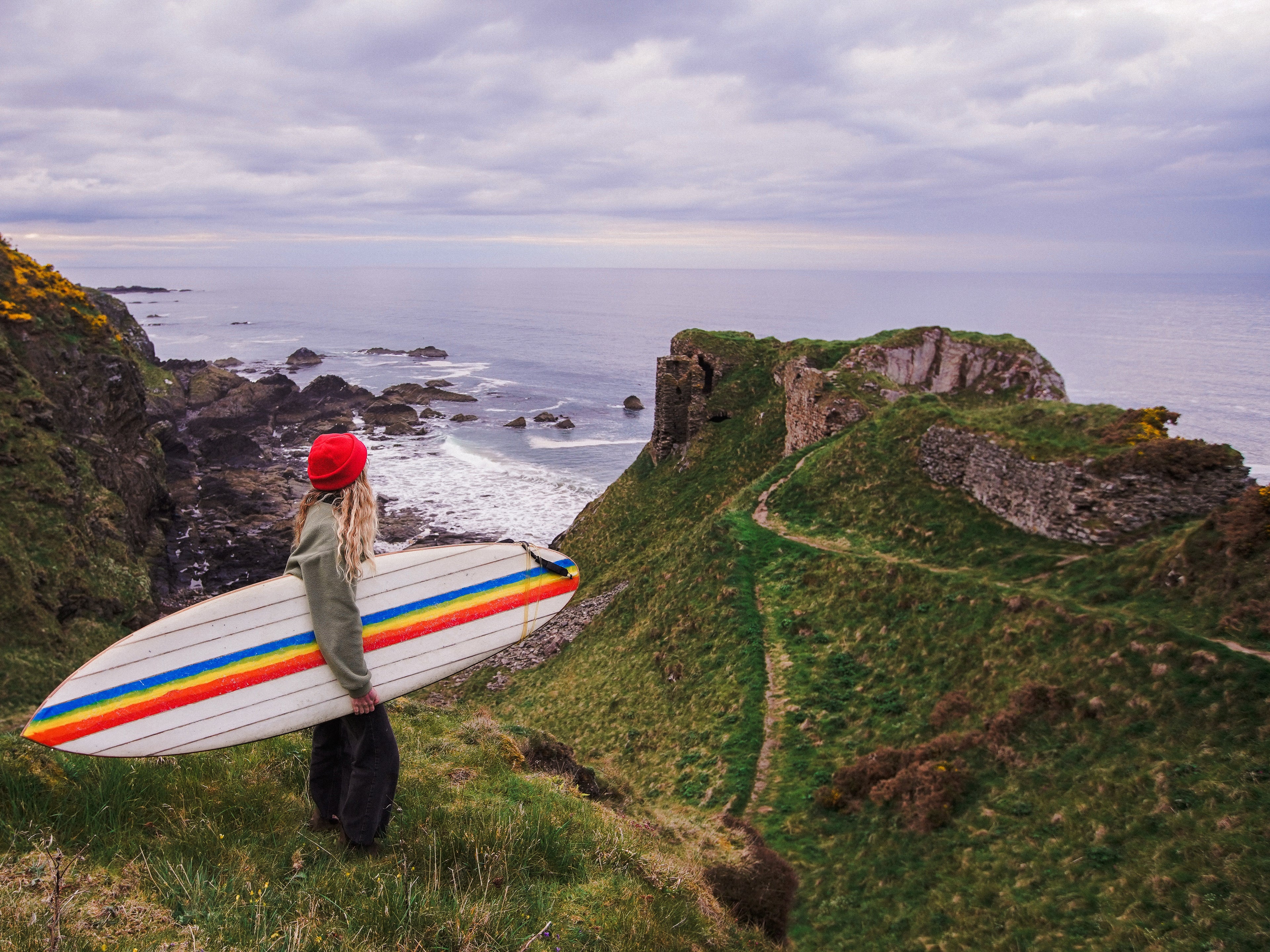Sustainability
The fashion industry plays a huge part in the climate crisis. The best way to truly be sustainable would be to not buy anything at all - everything we buy has an impact on the planet.
The next best thing to not buying anything at all would be buying secondhand or investing in quality items that you know you will use, that will last a long time and from a brand that cares and is responsible ethically and sustainably.
What steps do I take to make Surf Coo sustainable?
I take pride in our work and Surf Coo fleeces are made to last. As we sew every fleece in Scotland from start to finish, we can oversee that every detail is done carefully and correctly. For example, when we finish our overlocking, we knot the threads by hand and neatly trim them back. If you look at the inside of many garments today, you will find the overlocking left unknotted and with long, loose threads hanging out, ready to come undone after one wash.
To increase the longevity of my fleeces, I am happy to help with repairs. When customers have emailed me about puppy-bite holes or campfire spark holes in their fleeces, I am happy to send them pieces of fleece in the same colour so they can apply a patch over the hole. For one customer, I sent a fleece and lining piece, and they made a pouch pocket which beautifully covered their spark hole. It's my goal for every fleece to last as long as possible!
I use quality materials. My family have been using our fleece supplier for 20 years to make the highest quality clothing. We can attest to the beautiful feel of the fleece, the quality and the longevity of it as we have been using the fleece for decades. This year we are releasing 100% cotton pullovers which is our preferred fibre for our pullovers as it grows naturally with little harm to the planet and it's biodegradable.
I only keep minimal stock and mostly sew the product only when I get an order. This is called made to order and it is a great way to reduce waste. Many fast fashion brands intentionally overproduce garments and then throw everything that they don’t sell into landfill because it's cheaper and more efficient for them.
My packaging is plastic free and minimal to keep it as sustainable as possible. The mailing boxes and thank you slips are made from card and are recyclable.
To minimise waste, I often use fabric scraps to make patchwork blankets. It’s a great way to make something practical out of fabric that was too small for anything else and would have otherwise ended up in landfill.

What steps do I take to make Surf Coo ethical?
Everyone who sews for Surf Coo (myself and Luis) are paid fair wages and work in pleasant and safe working conditions. This is a direct contrast to most factories in, for example developing countries, where the conditions are not safe for working in, are overcrowded, have poor fire safety regulations, have lots of particles in the air, are dangerous and have unfair wages.
What can customers do after buying a Surf Coo fleece to help reduce it’s carbon footprint?
The largest part of a garments carbon footprint comes from after it is purchased. Tumble drying in particular is terrible for the planet. I recommend air drying your fleeces, especially because fleece dries so quickly. I also recommend washing your fleeces as little as possible. Depending on what you’re up to of course, you can wash your fleece as little as once every few weeks.
What are your resources for education on sustainability?
While sewing your fleeces I often listen to podcasts, particularly sustainability podcasts. My favourites are “Wardrobe Crisis with Clare Press” and “What on Earth: The sustainable podcast”.
I also read the book “Let my people go surfing” by the Patagonia founder Yvon Chouinard, which was a great resource on how to build a sustainable business.

